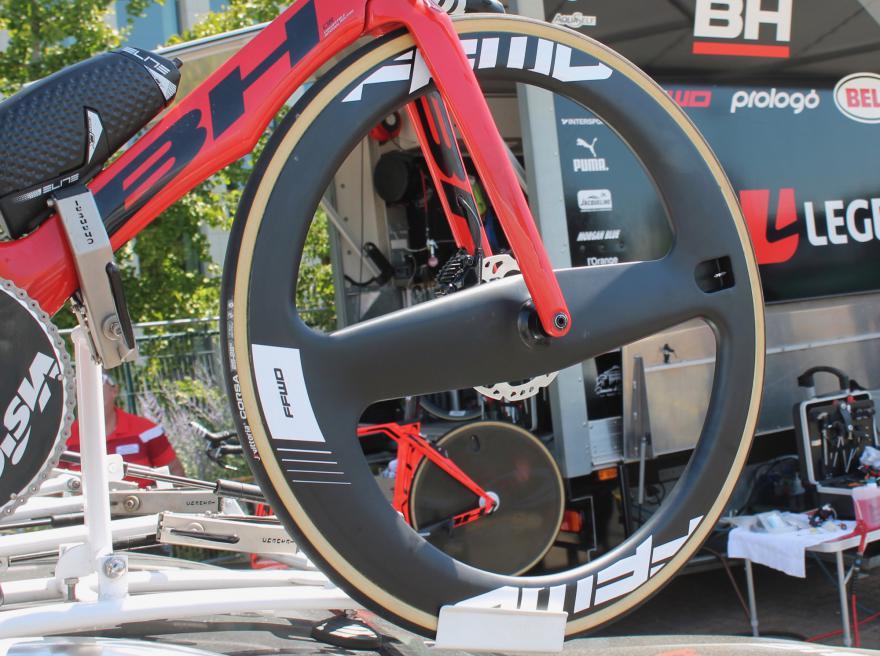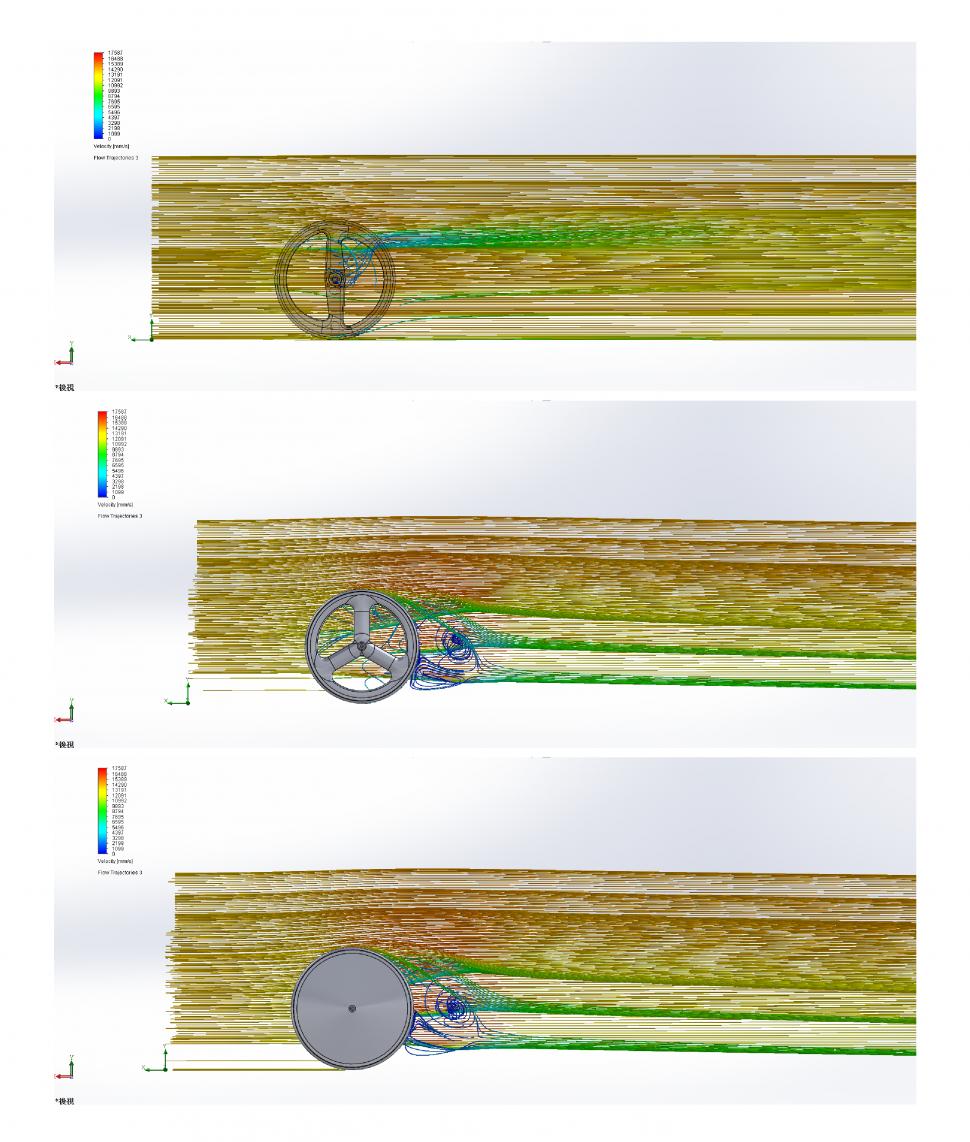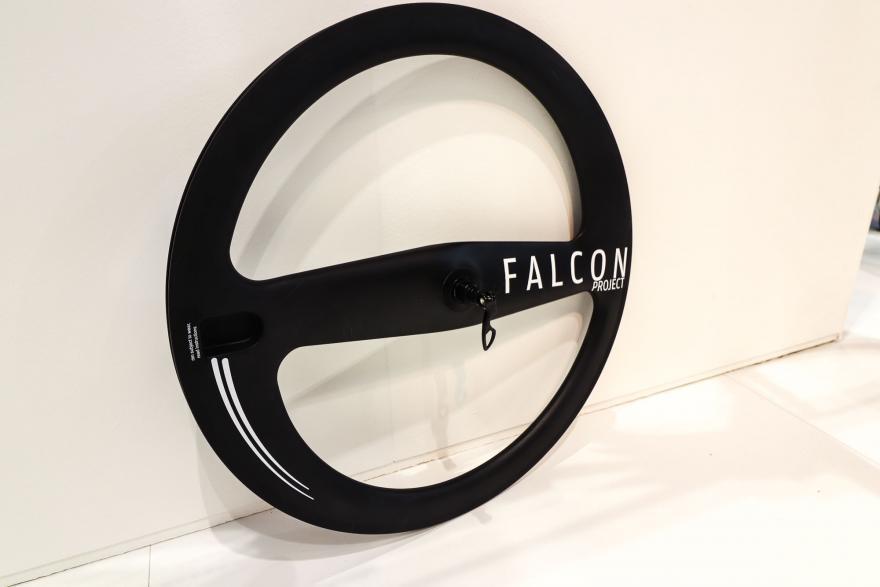- News
- Reviews
- Bikes
- Components
- Bar tape & grips
- Bottom brackets
- Brake & gear cables
- Brake & STI levers
- Brake pads & spares
- Brakes
- Cassettes & freewheels
- Chains
- Chainsets & chainrings
- Derailleurs - front
- Derailleurs - rear
- Forks
- Gear levers & shifters
- Groupsets
- Handlebars & extensions
- Headsets
- Hubs
- Inner tubes
- Pedals
- Quick releases & skewers
- Saddles
- Seatposts
- Stems
- Wheels
- Tyres
- Tubeless valves
- Accessories
- Accessories - misc
- Computer mounts
- Bags
- Bar ends
- Bike bags & cases
- Bottle cages
- Bottles
- Cameras
- Car racks
- Child seats
- Computers
- Glasses
- GPS units
- Helmets
- Lights - front
- Lights - rear
- Lights - sets
- Locks
- Mirrors
- Mudguards
- Racks
- Pumps & CO2 inflators
- Puncture kits
- Reflectives
- Smart watches
- Stands and racks
- Trailers
- Clothing
- Health, fitness and nutrition
- Tools and workshop
- Miscellaneous
- Buyers Guides
- Features
- Forum
- Recommends
- Podcast
TECH NEWS
 FFWD Falcon_TeamArkeaSamsic
FFWD Falcon_TeamArkeaSamsicFFWD’s stunning new Falcon 2-spoke wheel to debut in Tour de France time trial
We get to see some radical and occasionally downright unusual equipment being rolled out for the time trial, and the 27km individual on Friday in this year’s Tour de France will be no different, as FFWD breaks out its stunning 2-spoke wheel with the Total Direct Energie and Arkea-Samic teams.
We first saw the Falcon wheel when it was being shown at last year’s Eurobike show as a prototype. Back then it was still conducting wind tunnel testing, and more recently it has been tested by the two Tour teams it supplies wheels to. And we presume the UCI is happy with it.
The wheel is unique in having just two spokes. They’re shaped using NACA airfoil profiles. The rim also has varying depths from 48mm at the shallowest to 90mm at the tallest. These two features combine to produce “minimal drag at the tip-off point of the wheel” according to the company.
FFWD claims in its testing that between 0 and 10 degrees of yaw angle, the Falcon outperforms rival front wheels with up to a 9 watt saving. To reiterate, these are their claims, not ours. It also doesn’t much of its testing data, other than some wind tunnel pictures that appear to show the Falcon producing less turbulent air than a three-spoke and disc wheel. It doesn’t tell us the speed at which the testing was conducted nor which rival wheels it used.
A bit of digging around on the internet finds the 2-Spoke, a dutch company that appears to have either originally developed this wheel which FFWD has then taken over, or it’s just very similar. There’s some interesting aero data on there that is worth a look.
Funny looking wheels with few spokes are nothing new. The pursuit of aerodynamics has seen many wheel designs trialled over the years, since the 80s when aero really started to impact the pro cycling scene. Much of the development was thanks to carbon fibre, which allowed designers to move away from the traditional 28 metal spokes to more exotic and daring designs.
Graham Obree famously used a Specialized branded three-spoke front wheel to brake the hour record. Chris Boardman went two better, using a Mavic five-spoke carbon wheel for his hour record attempt. And let’s not forget the iconic Spinergy (swiftly banned by the UCI) and Spin wheels too that were popular for a time.
The wheel is made from a combination of Toray 800 and 1000 carbon fibre. It’s available in tubular and clincher versions and rim or disc brakes. The rim is wide to suit the trend for wider tyres. There’ll also be a track wheel too.
And you’ll be able to buy this wheel soon, it goes on sale in September with a price of €1,899. The wheel will debut in the Tour de France time trial on Friday.
More info at www.ffwdwheels.com
David worked on the road.cc tech team from 2012-2020. Previously he was editor of Bikemagic.com and before that staff writer at RCUK. He's a seasoned cyclist of all disciplines, from road to mountain biking, touring to cyclo-cross, he only wishes he had time to ride them all. He's mildly competitive, though he'll never admit it, and is a frequent road racer but is too lazy to do really well. He currently resides in the Cotswolds, and you can now find him over on his own YouTube channel David Arthur - Just Ride Bikes.
Latest Comments
- open_roads 2 sec ago
This is a great example of where public services can't be bothered to join up in order to drive the outcomes the public expect....
- eburtthebike 41 min 5 sec ago
He understands it: his social media site is called Truth Social or somesuch.
- eburtthebike 42 min 42 sec ago
Gosh! An inflatable helmet! I'm astonished that no-one has ever thought of that before. Much.
- slc 56 min 53 sec ago
I'll still be doing better than Meatloaf.
- chrisonabike 2 hours 3 min ago
Because they can....
- wtjs 2 hours 5 min ago
Of course the nutter being an Audi driver is just confirmation bias, just like the electric BMW driver killing a small child by SMASHING through...
- Secret_squirrel 2 hours 8 min ago
If the employee's of Komoot are mostly German employees on standard German contracts the new Italian owners are in for a bit of a shock....
- Robert Hardy 2 hours 16 min ago
Raising the maximum price limit a few years ago may be providing an avenue for abuse but I now see more and more parents delivering their children...
- mdavidford 2 hours 32 min ago
It is (significantly) more likely than 50%*, but not because of the 'Birthday Paradox' - just through weight of numbers and simple(!) combination...




Add new comment
11 comments
Apart from anything else, they look shit. Worse than the 3 spoke alloy wheels the yoof used to stick on their Corsas 30 odd years ago
Apart from anything else, they look shit. Worse than the 3 spoke alloy wheels the yoof used to stick on their Corsas 30 odd years ago
A reinforced plastic 2 spoke wheel, what could possibly go wrong?
Answers on the back of a dentist contact card!
I await the introduction of the one-spoke wheel, like an old Citroen's steering wheel.
And then a few years later the no-spoke wheel. Of course, this has already been invented (http://mikebloggle.blogspot.com/2008/05/a5-designer-makota-makita-hirosh...) and specifically banned from F1.
I know they are tested for strength, but does anyone else get the fear looking at these? Not for me.
For cars and particularly motor racing, it's about creating as much downforce as possible whilst keeping the drag as low as possible. That's why F1 cars are so damn complex! Don't need downforce on a road bike (yet) so it's all about managing the airflow over the tyres, wheels, frame and also the rider to reduce drag, and a large part of that is managing how the air detaches from the surface to reduce the turbulent air, which causes drag. I'm not an aero expert though, I'm sure one will be along in a moment
This 2-spoke idea is interesting, not entirely new, but I do wonder why other brands haven't looked at it in greater depth?
So if they're saying that it produces less turbulence than a disc wheel, and that this is proof it's more aerodynamic, why aren't the teams using it front and rear rather than using a disc at the back?
I don't really understand aerodynamics, so this is uninformed speculation really, but as I understand it certain kinds of turbulence can actually be a good thing - the spoiler on a car is intended to break up the air flow (hence the name), deliberately causing turbulence.
Perhaps it is important to minimise the turbulence from the front wheel because of its effect on the back, but some turbulence from the back wheel is good?
Spoilers on the back of cars are intended to produce downforce so they hold the car down at speed and can corner better. One example was the Audi TT which was originally sans spoiler and there were multiple accidents and even deaths. They were then recalled and spoilers were added. No doubt the cars were faster without them but harder to drive...
Cyclists aren't going fast enough to need added downforce, all we want/need is to cut through the air as cleanly as possible.
Cool wheels though....
No, they are not. Wings are intended to produce downforce. Most cars do not have wings.
Spoilers are intended to alter the aerodynamics to reduce drag. These days, pretty much all cars have spoilers although in most cases they are very subtle.
No, they are not. Wings are intended to produce downforce. Most cars do not have wings.
Spoilers are intended to alter the aerodynamics to reduce drag. These days, pretty much all cars have spoilers although in most cases they are very subtle.
It’s 25 years since I had a “proper” job in aerodynamics (and that was fast jets, not cars) but I’d suggest that on everyday road cars the main role of spoilers is to actually fix the separation point of the airflow from the body, to stop it varying with changes in the relative wind. For those of us old enough to remember the Ford Sierra Saphire, they had to add trim pieces known as elephant ears to the rear of the C-pillars to stop variations in aerodynamic lateral loads upsetting the car in cross winds. Similarly, horizontal trims at the rear of the boot lid fix that separation point and prevent variations in lift here.